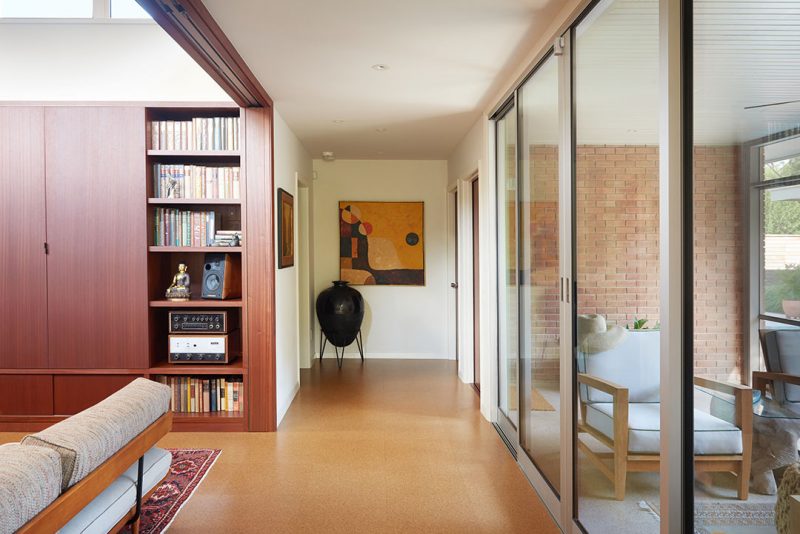Today, cork flooring is a rare sight. You might even think it’s a novel approach to flooring options. But cork flooring has been around since as early as 1870—in fact, the US Library of Congress which was built in 1897 is rather famous for its still-intact cork floors.

Cork’s use as a common flooring option really came about in US homes in the 1920s through the 1940s and the post war housing boom in the 1950s paved the way for cork flooring being a popular choice for early mid century modern homes. Cork along with linoleum were among the most common flooring choices for post-war bungalows. And modernists at the time were attracted to cork’s durability and affordability. Frank Lloyd Wright might be one of the most famous proponents of cork flooring. He loved both its strength and its beauty and used it in many of his projects, but probably most notably at Fallingwater. Joseph Eichler preferred cork too—cork flooring was prominently touted in the sales brochures for his homes.
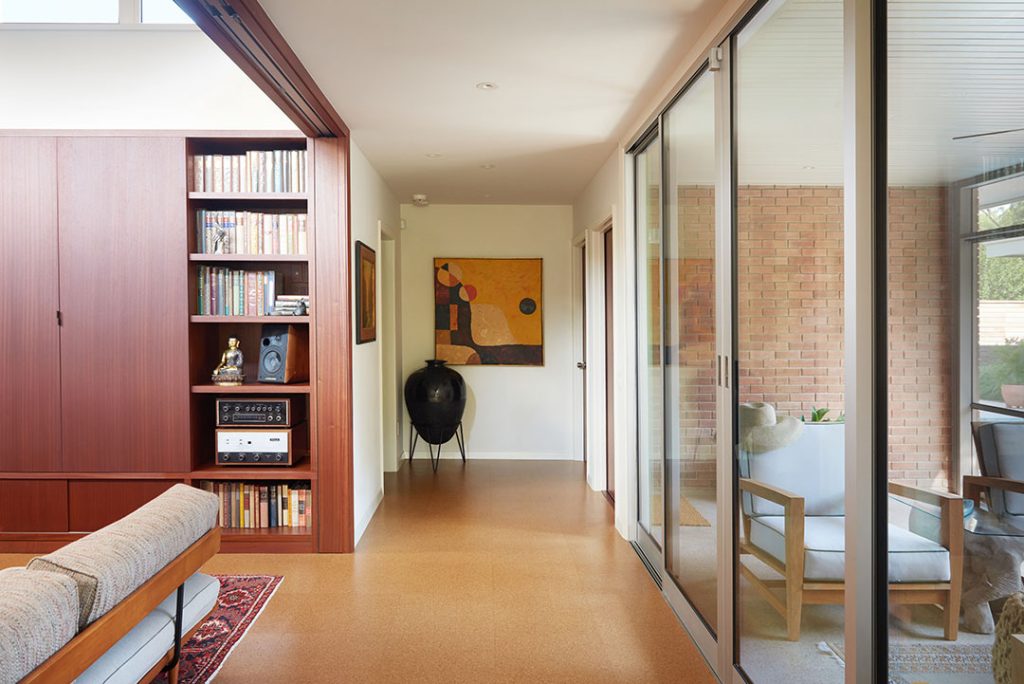
The Benefits of Cork Flooring
Cork is making a resurgence today thanks to its aforementioned long-lasting qualities. It’s a wonderful choice for mid century homes where you want a warmer and softer more period-appropriate feel. And since cork flooring is a classic, it’ll stand the test of time compared to other trends.
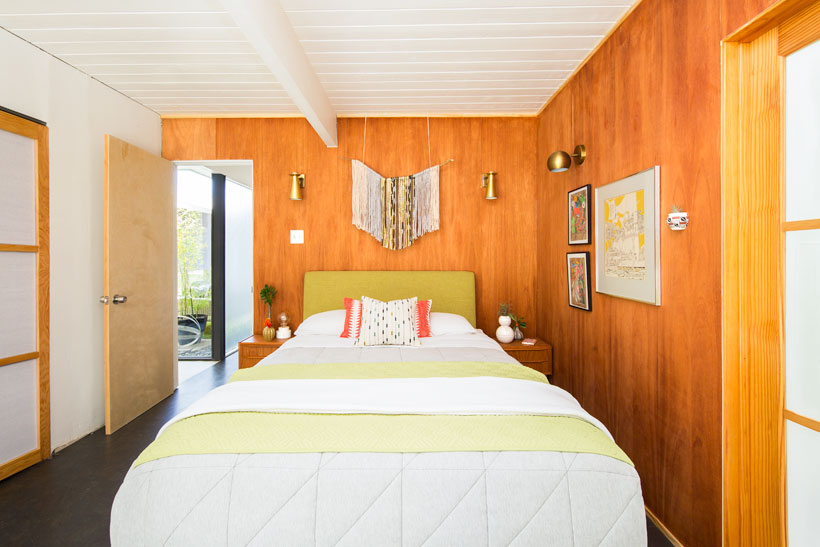
Price
At around $2 per square foot, cork flooring’s price per square foot is comparable to hardwood. But unlike wood, cork is naturally fire resistant and termite resistant. You can thank the Mediterranean climate in which these trees thrive and to which it adapted these protective qualities.
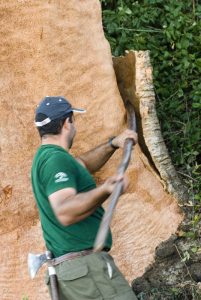
Eco-friendly and sustainable
Cork comes from the cork oak, a tree native to Southwest Europe and Northwest Africa. Though these days cork oak is grown in the western United States, too.
With properly harvested cork, the trees aren’t cut down. Rather the outer layers of its bark are shaved and left to regrow. A single tree can be reshaved about 12 times in it’s lifetime and the trees can live for 200 years or more. And since cork is lightweight and compact, shipping this product to manufacturers around the world can be done efficiently lessening its carbon footprint compared to other materials like wood and stone.
In addition to cork flooring being eco friendly, cork flooring is great for allergies too. Cork does not absorb dust or harbor mites like other materials do.
Naturally insulating, cork is not only cozy underfoot—especially in winter or in colder climates (beats stepping onto concrete or stone in the December or January)—cork maintains its temperature remarkably consistently which pays off in other ways.
Lastly, since cork is seemingly so impervious to the elements, cork simply has to be pressed and baked in order to prepare it for use as flooring which means it’s not treated with a host of chemicals and preservatives the way some other materials wood and carpet sometimes has to.
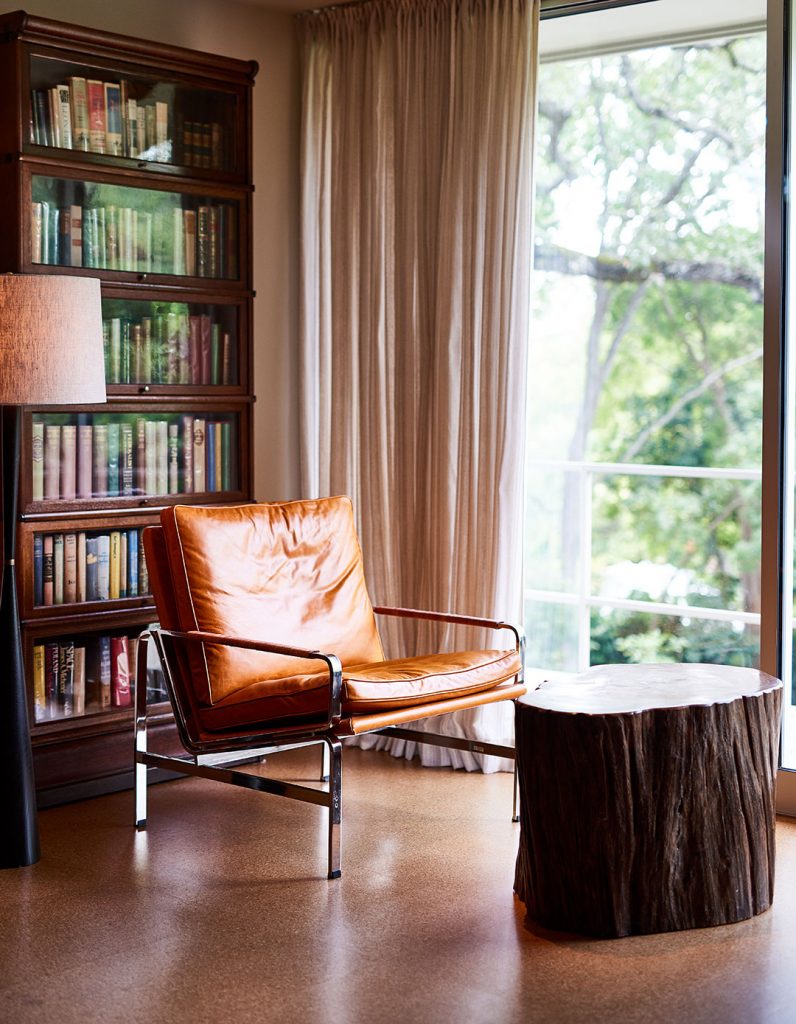
Easy Care
There’s a reason cork is used for wine bottles. It’s water resistant and won’t mold. So cork can be a great option for bathrooms and kitchens. Or, if you live in a tropical climate where humidity can be an issue. Cork is also scratch and dent resistant with regular resealing every 5-6 years so your flooring can last a very long time (again, see: US Library of Congress). Everyday cleaning consists simply of vacuuming or sweeping and the occasional mopping.
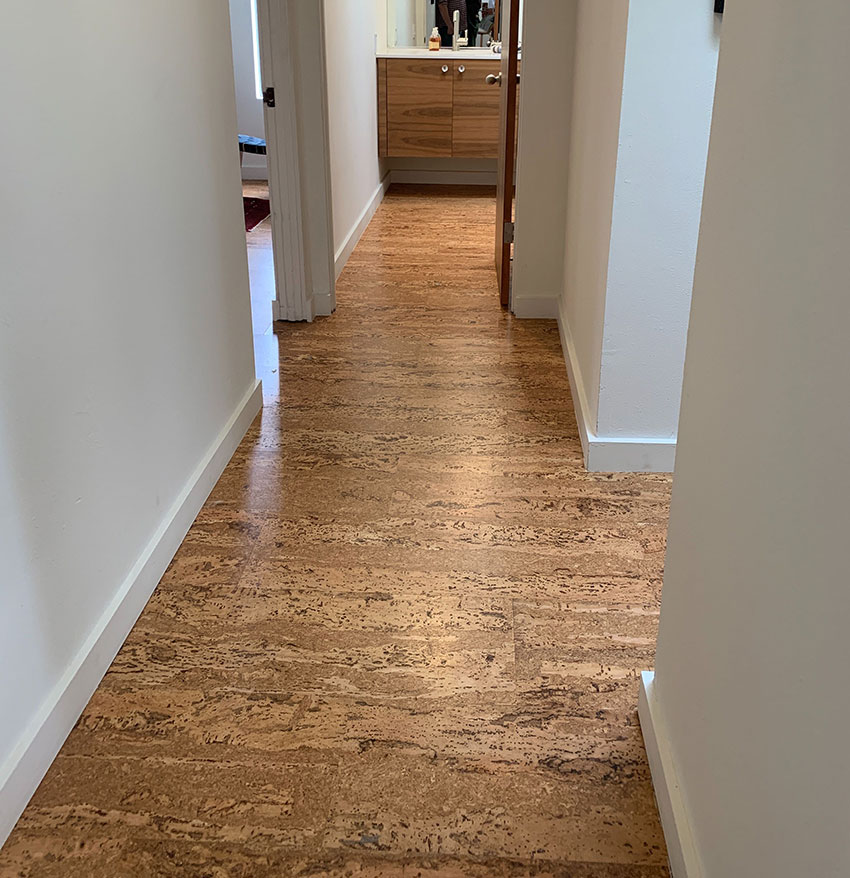
Luxe to the Touch
Some of the best benefits of cork are more qualitative. Due to it’s hexagonal cell structure, cork is naturally buoyant, flexible and shock absorbent. This means it feels soft underfoot and therefore much quieter than stone, wood or tile. And because it’s naturally self temperature-controlling, cork flooring feels warm in the winter and cool in the summer.
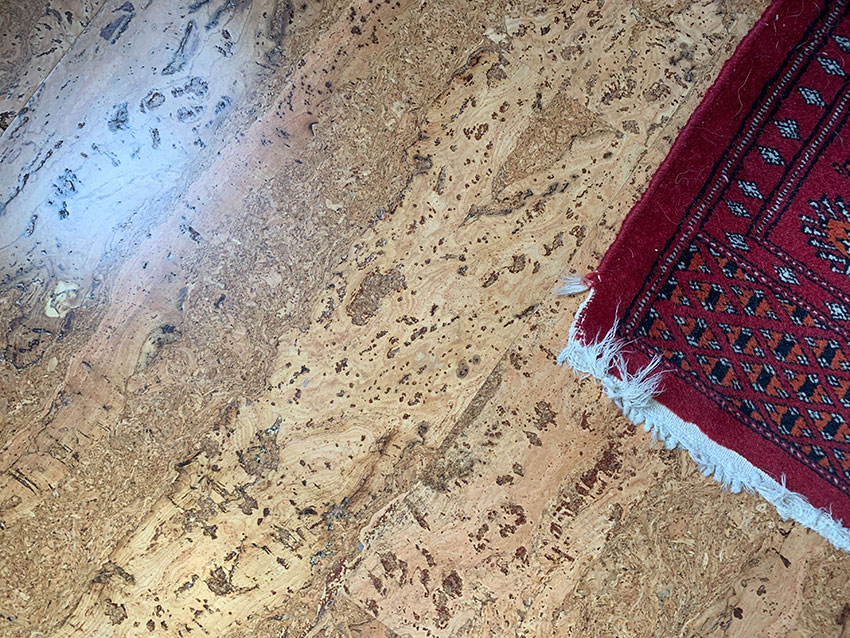
Cork Flooring: The Cons
Though cork is quite durable and long lasting, because it’s a minimally treated natural material, most manufacturers will only offer guarantees for it up to 15 years.
Installation can be tricky too. The sub flooring needs to be carefully leveled and even for smooth application. Traditionally, cork flooring is glued down which means proper and meticulous application is key. Cork flooring is available in click-and-lock tiles, too. While that will the price up a bit it means that if you needed to repair a damaged area, you could simply replace the tile. To repair glued-down cork, you would cut and scrape away the damaged area and patch it with more cork or for tiny nicks, you can fill with wood filler and paint the area to disguise the repair.
Looking for more flooring info? Check out this overview of the most common flooring types for mid century modern home.
Of course, don’t forget to follow us on Instagram, Facebook and Pinterest for more Mid Century Modern inspiration!

